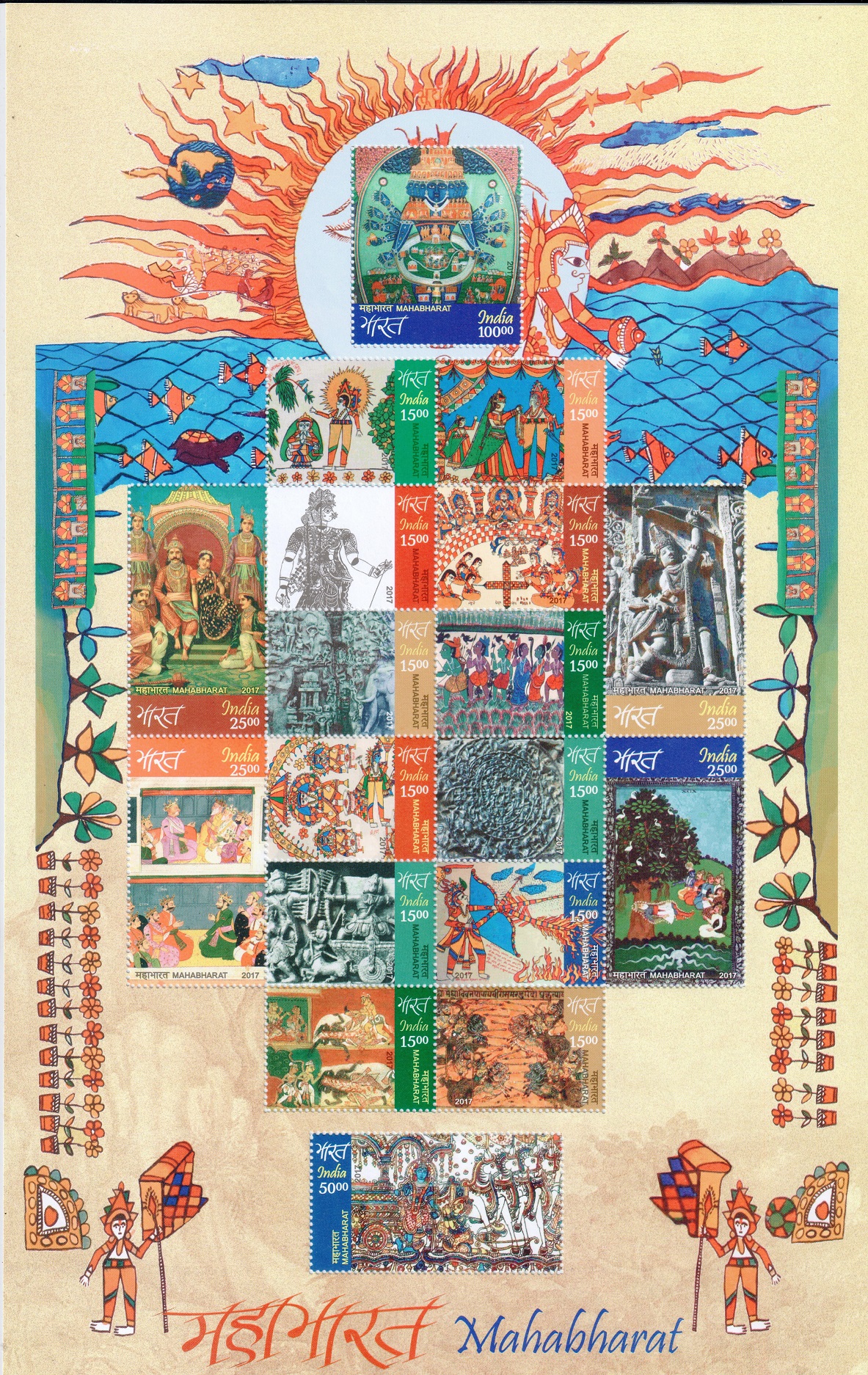
Mahabharat
Complete set of 18 nos. of special postage stamps on the Mahabharata, the great Sanskrit epic from ancient India, written by Veda Vyasa :
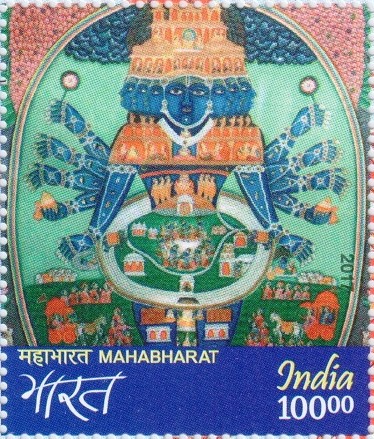
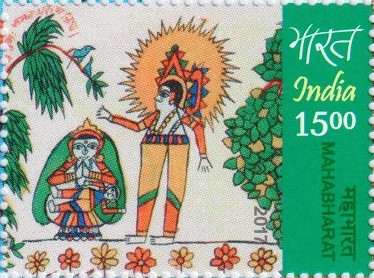
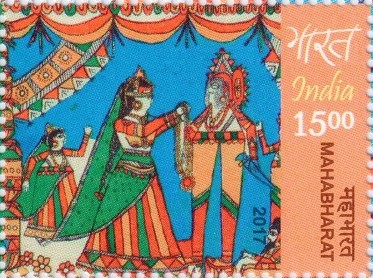
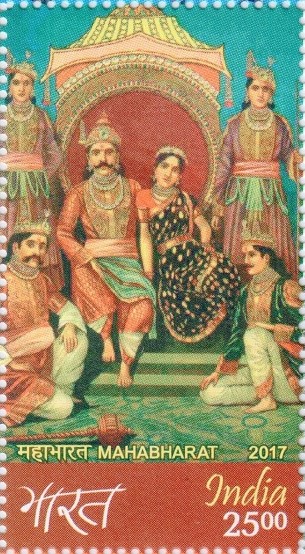
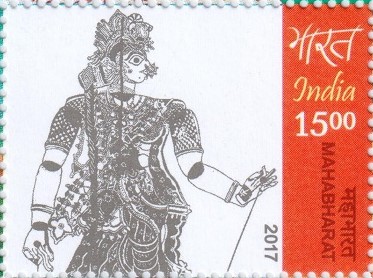
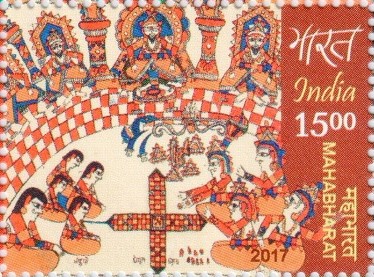
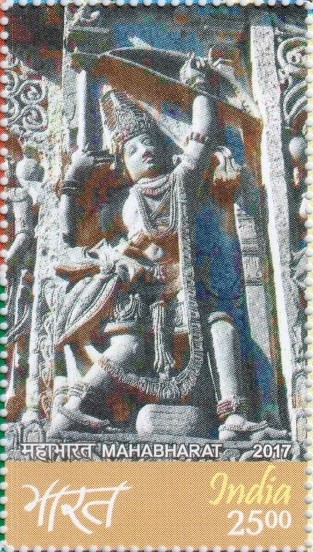
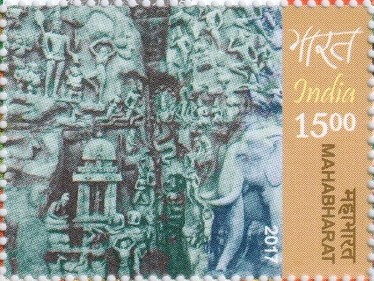
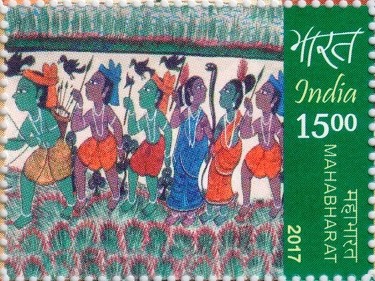
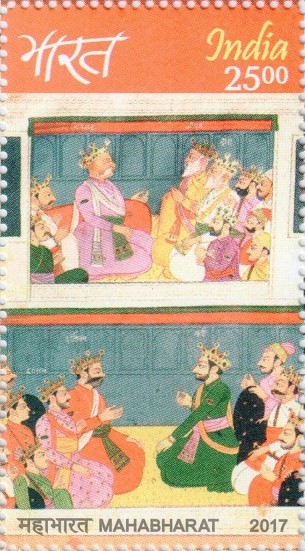
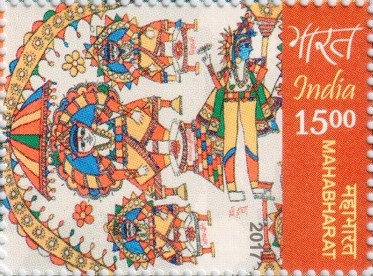
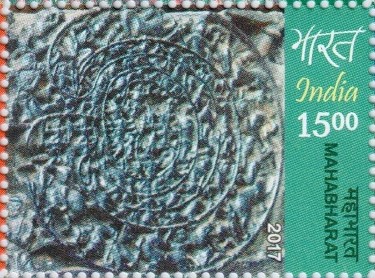
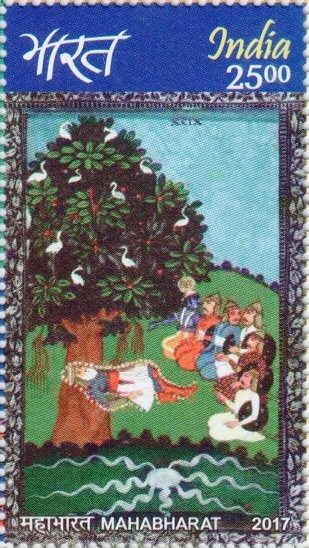
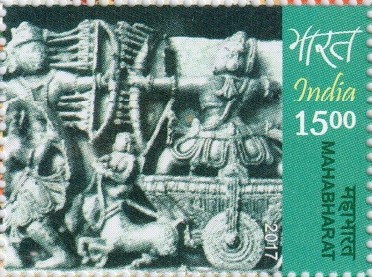
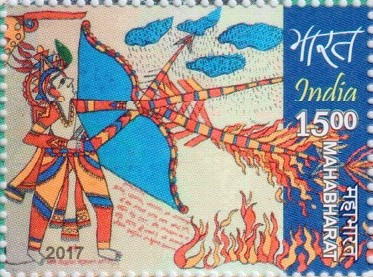
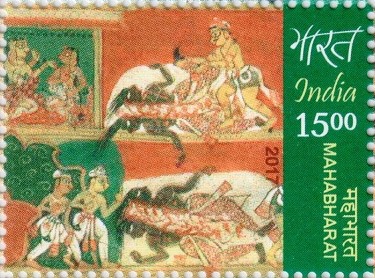
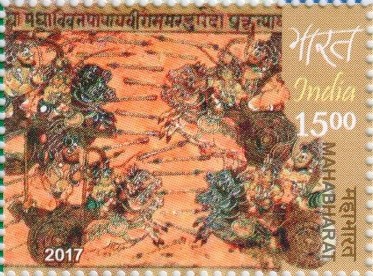
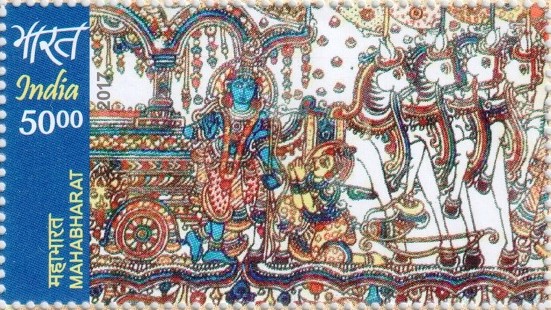
 Issued by India
Issued by India
Issued on Nov 27, 2017
Issued for : Department of Posts is pleased to issue a set of eighteen Commemorative Postage Stamps on Mahabharat.
Credits :
Stamp/Miniature Sheet/Sheetlet/FDC/Brochure : Designed by Smt. Bharti Mirchandani based on inputs received from Sh. Lakshmikanta Dash (Department of Posts), Ms. Meena Mani, and Smt. Santok Ba.
Cancellation Cachet : Smt. Nenu Gupta
Type : Sheetlet, Mint Condition
Colour : Multi Colour
Denomination : 10000 Paise, 5000 Paise, 2500 Paise (4), 1500 Paise (12)
Miniature Sheet Printed : 5.0 lakh each
Sheetlets Printed : 5.0 lakh
Printing Process : Wet Offset
Printer : Security Printing Press, Hyderabad
About :
- The Mahabharat is a world of its own, vast, immortal, rich, deep, essential, thoughtful, philosophic, pure, intriguing, engaging and magnanimous. There isn’t any emotion that is left untouched or unspoken, as each character in this colourful yet tragic epic poem is a kind of its own. Each relationship is vividly expressed, yet exists on a complex note. JF Woods elucidates referring to Mahabharat, “what is not here, is nowhere else”.
- The greatest epic of India, Mahabharat, compiled by Vyasa between 300 BCE and 300 CE, is considered to be of the Puranic Period. The Bhagvad Gita is narrated during the Bhisma Parva, just before the epiphanic moment of beginning of the great war.
- If we look at the history of culmination of this sacred text, it is a conglomeration of ideas beginning from the earliest phase of Indian civilization. It includes the Vedic philosophy, the post Vedic, the Upanishadic thoughts, upto the Puranic narratives.
- All these developments formulating the essence of Indian philosophy constitute the Gita. It entails Lord Krishna’s revelation of his divine nature to Arjuna. As a result Arjuna is able to decide upon a course of action that was any way rendered inevitable by the complex sequence of events. Lord Krishna counsels Arjuna on the mandates of Dharma and the necessity of action, finally relieving him off his emotional dilemma.
- According to Nick Sutton in the essay, ‘What is Dharma? Ethical tensions within Mahabharat’, “the Mahabharat dramatises this tension between moral and ritual ethics and perhaps it is through the discourse of the Gita that the epic is able to explore further on these grounds.”
- This blend of Gita and Mahabharat is evocative of the interconnectedness within the universal cosmology, as both the divine and the human world tend to co-interact. Herein there is violence in both domains, emotional turbulence in the form of conspiracy of Duryodhana and Shakuni, deceit, hatred and victimization of the righteous Pandavas.
- The position of Draupadi within the epic is a complex one, on one hand, she suffered relentlessly, while on the other hand, she was a woman with a mind of her own, assertive and unflinching. Mahabharat operates on the concept of power, state and kingdomhood which is intricately tied to matters of inheritance and lineage. As the inevitability of fate determines events, in this duel between Karna and Arjuna, Ghatotkach falls prey to Karna’s attack from the infallible weapon blessed to him by Indra, thereby, sacrificing his life for Arjuna. Son of Bheema and Hidimbi, he was of a bold built, exemplifying a ghatam (a clay pot).
- The Lakshagriha episode is a result of Duryodhana’s wrath and hatred for the Pandavas. He conspires an evil trap in the form of House Of Lacquer to burn his enemies to death, but is himself befooled as Pandavas manage to escape through a secret tunnel, due to Vidura’s prior symbolic warning to Yudhishtira.
- Next if we explore the role of cosmology within Mahabharat, the best would be to refer to Bhisma and Shikhandi. Their encounter with each other in two different cycles of birth and rebirth is determined and based on the motif of revenge and fate. Having known that Bhisma’s ethical principles would prevent him from confronting a woman at the battlefield, Arjuna used Shikhandi as a shield to defeat the mighty Bhisma.
- Interestingly, Mahabharat apart from being a Mahakavya narrating the great war, it is also a bildungsroman which is a “narrative tracing the development of a protagonist’s character from childhood to maturity through varied experiences” as we see in the epic, the life and times of the Pandavas and Kauravas since their childhood to their growth as skillful warriors.
- War entails no peace, instead punctures a human being’s consciousness to the extent that its destruction of life and property haunts him throughout. The epic as it is marked by its multilayered characteristics unfolds its events within the paradigm of human fate and destiny, its magnanimity in the course of time has anchored it to eternity. As to this day we see adaptations of Mahabharat in different regional languages, it is interpreted and reinterpreted, not only in India but has bestowed its glory all over the world. The charm of this epic has cast its spell across time and space, as different part of the country adopted and adapted the narrative, wholly or focusing on parts, to suite their own cultural identities. Almost every State has some relics dedicated to an episode from the great epic. The spiritual vastness of this story, eventually is a reflection of spread of civilization and the related conflicts, manifest today in different architectural, sculptural, folk art and other forms of artistic expressions.
- Mahabharat is an epic that has permeated life and culture far beyond the Indian subcontinent. In India, facets of the epic appear in song, dance, film, literature, painting, sculpture, and everyday conversations. These stamps depict but a few strands of the art forms which continue to influence and mould life, learning, and politics. Department of Posts pays homage to this immense living tradition by offering a selection of works which depict the Mahabharat from different parts of India.
- The set of stamps being brought out by the Department of Posts is an attempt and portray this rich variety of expressions of different events and episodes of the story. Department of Posts issues one sheetlet with 18 stamps and two miniature sheets which are described in forthcoming paragraphs.
- As we count the stamps as they are arranged in the sheetlet and proceed from top to bottom, counting from left to right in each row, the cosmic form of the creator in traditional Rajasthani pichwai style is depicted in the large top stamp #1 in sheetlet. Raja Ravi Verma brought his distinct style to the royal depiction of the five Pandav brothers with Draupadi in stamp #4. Draupadi appears as a leather shadow puppet from Andhra–Karnataka region which is depicted in stamp #5. Stamp #9 is an illustration of the Pandavas with Draupadi during their years in exile from patachitra folk scroll painting from Bihar–Bengal region. In stamp #10 and #13, Miniature paintings done in the Mughal style to illustrate their translations into Persian have been depicted. Stamp #10 is the illustration from Bhagvat Puranam, wherein Kauravas confer at Hastinapur as Bhishm, Dhritrashtra and Vidur try to avert the war. Stamp #13 is the illustration from Razmnama, depicting Bhishma on a bed of arrows, awaiting for auspicious time to leave his mortal coil. Hindu and Jain manuscripts were illustrated in watercolour styles of northern India in stamp #16 & #17. Stamp #16 is the illustration from 1540 Bhagvat Puranam manuscript, depicting a vital battle during the great war, when Karna used up his most powerful weapon to subjugate Ghatotkachh which is depicted in stamp #17.
- The sculptors chiseled stone at Halebidu, depicted in stamp #7 showing Arjun at the svayamvar; stamp #12, depicts the chakravyuha that killed Arjun’s son in the great battle; stamp #14 is the battle scene showing Arjun, the skilful archer and Arjun’s penance to earn divine weapons, from Mahaballipuram in stamp #8. Kalamkari artists of Andhra Pradesh use fabric to paint scenes from the epics which is depicted in stamp #18.
- Many of the pictures used in the stamps (stamps #2, #3, #6, #11, #15) and in the accompanying philatelic material including the background and borders for the sheet of 18 stamps, are adapted from the huge body of work done by an ‘illiterate’ folk artist from the heart of central India who dedicated her life to illustration this epic. Santok Ba painted a scroll of 1200 meters depicting episodes from just the adi parva part of the epic. This work has been preserved at the IGNCA, Delhi, and Department of Posts is grateful for the opportunity to present some of her work to the world. Santok Ba’s family supported and supplemented her efforts and they deserve credit too, as do all the unnamed anonymous traditional artists who have kept the stories alive.
- Text : Based on the material received from writer Ms. Anika Singh and available on internet.


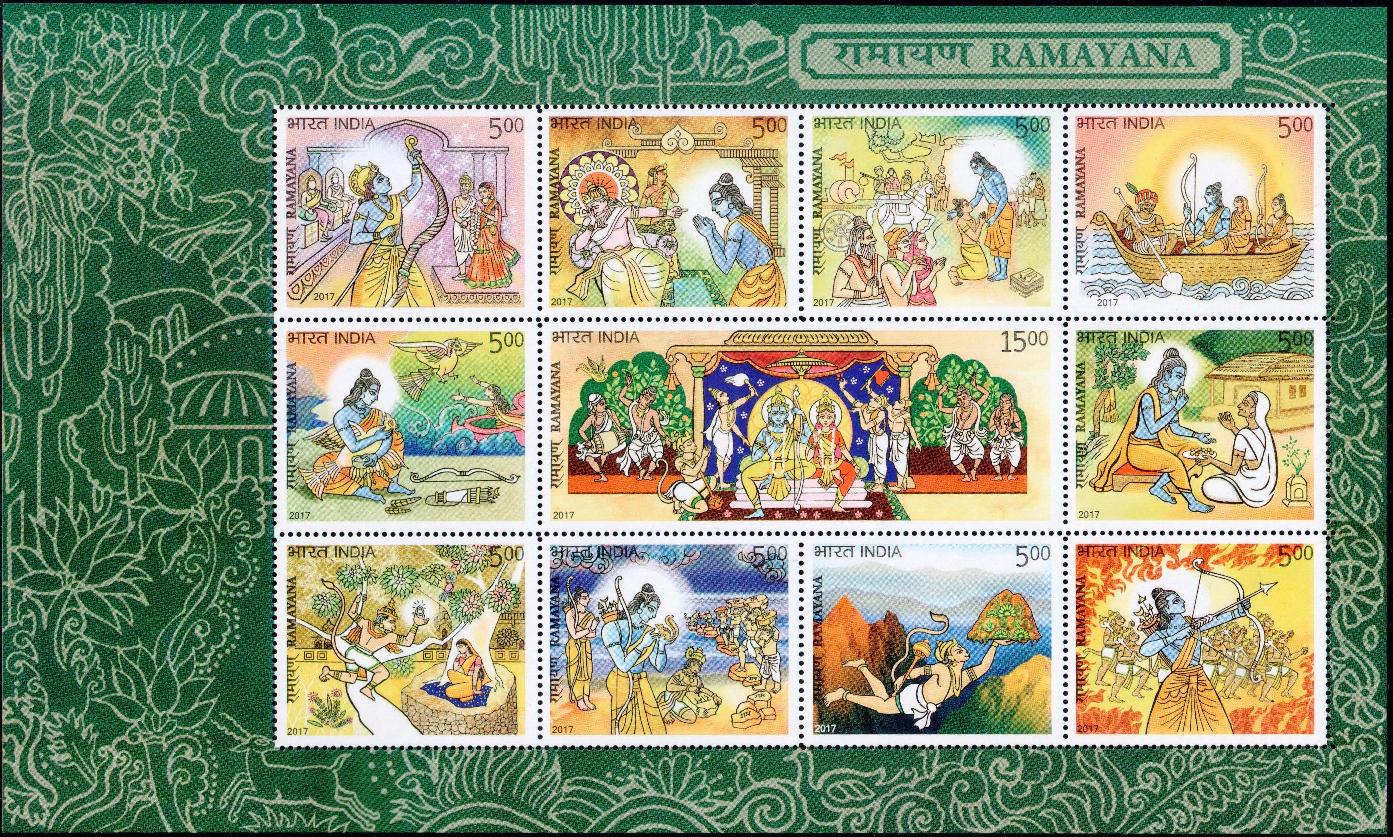
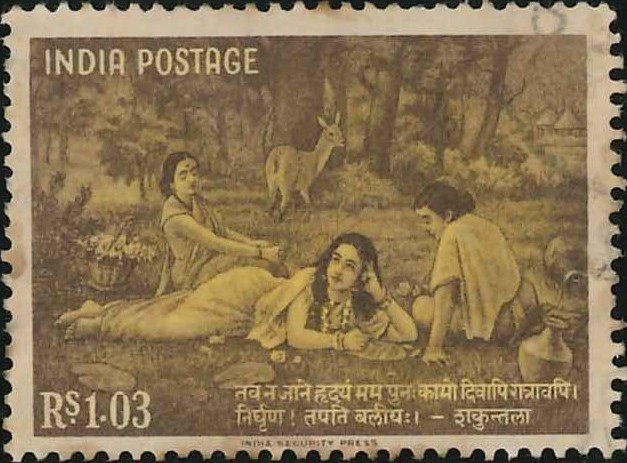
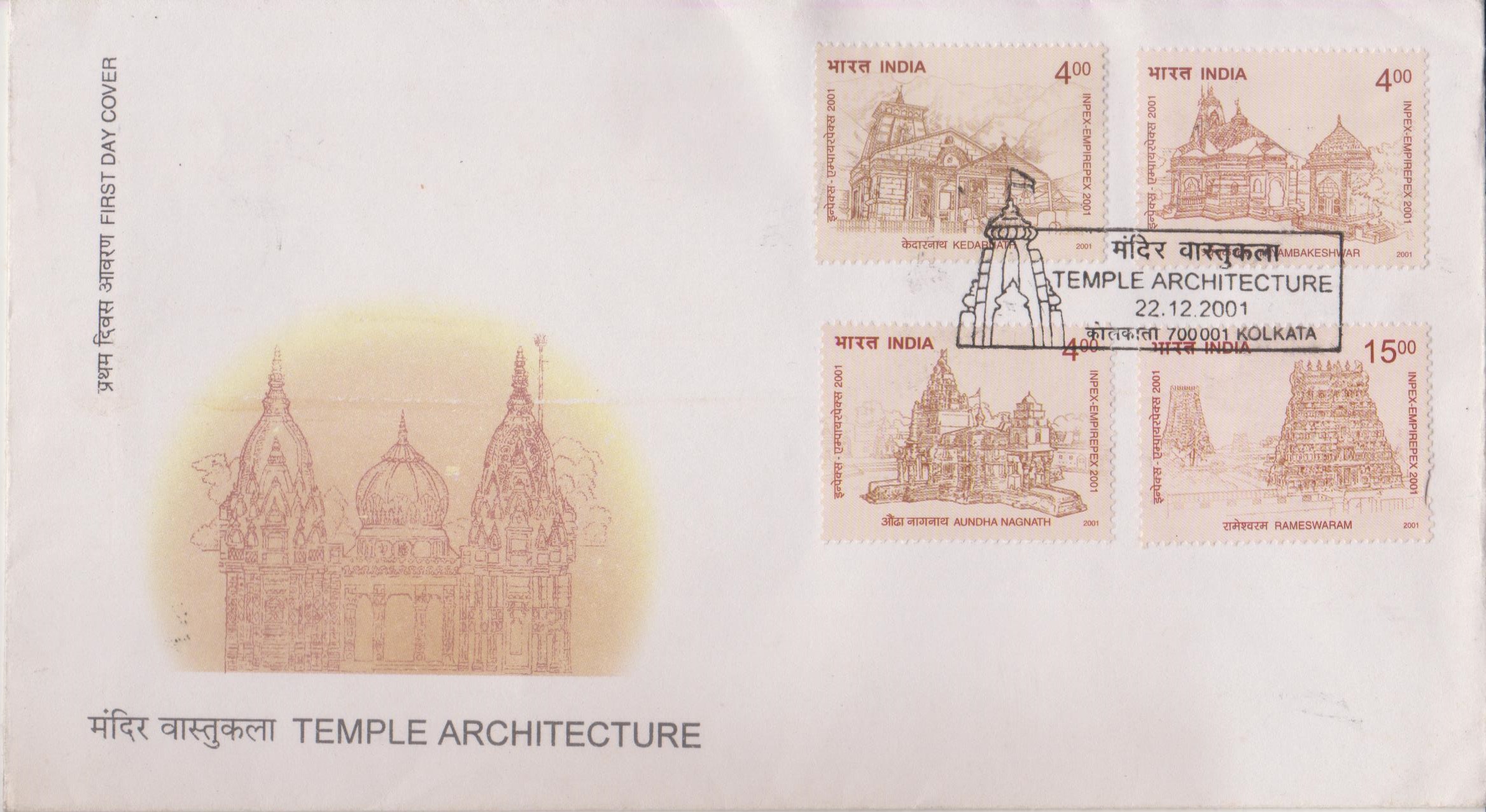
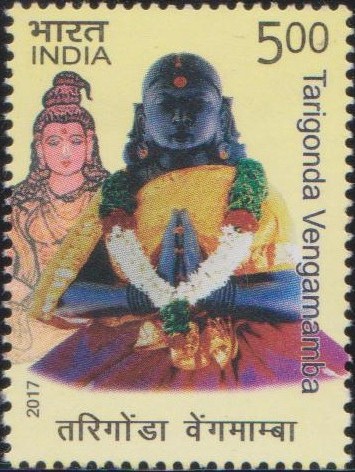
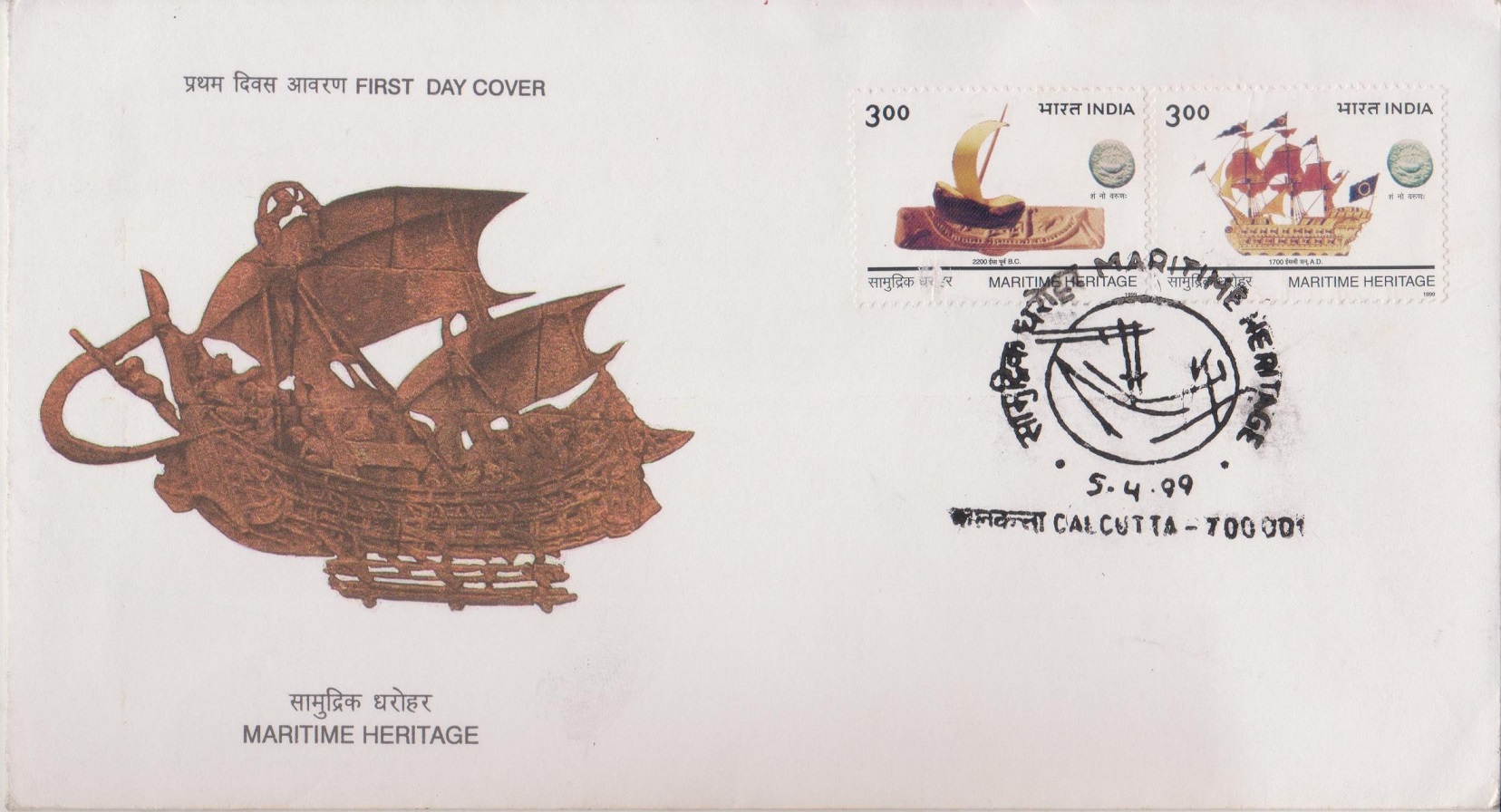
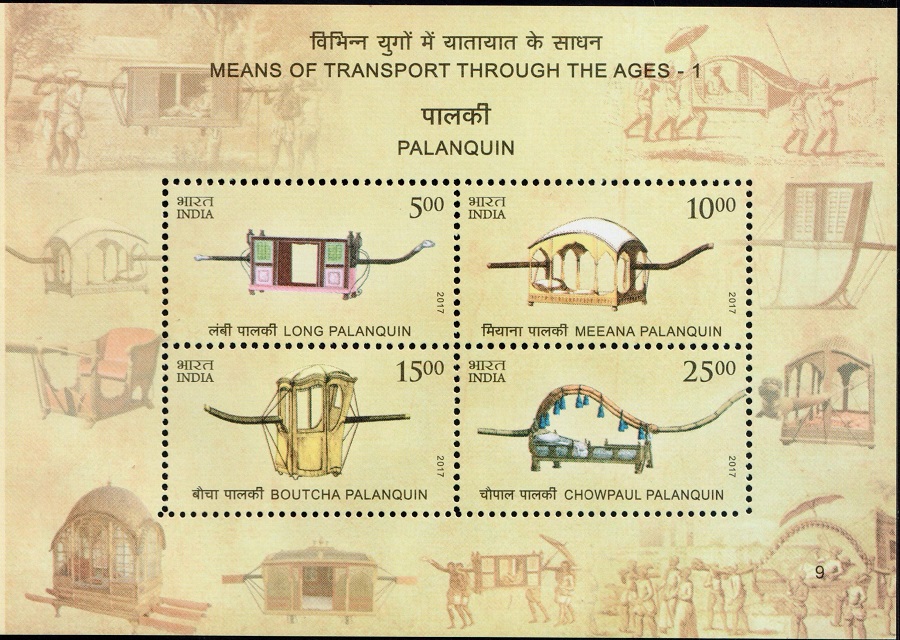
[…] (Lord terrible) and sojourned here only. Satidevi immolated herself in yogagni (yoga fire). The Mahabharata says that Arjuna visited this place during his peregrination of holy […]
[…] Travaile Begvenne, 1634”, “History of the World, by Sir Walter Raleigh, (1676 to 1677)”, “Mahabharata” in Persian written by Abul Fazal Faizi […]
[…] has been an important battle-winning factor in war since time immemorial. The chariots of the Mahabharata, the hordes of the Huns, the Dragoons of Napoleonic France and the Panzergrenadiers of […]
[…] material furnished by Haryana Government. The first day cover depicts a scene from the epic ‘Mahabharat‘, believed to have been enacted on the plains of what is now Haryana. The cancellation has […]
[…] the Sangam literary works, Silappadhikaram and Manimealai and also our epics like Ramayanam and Mahabharatham. Well versed in the art of warfare. This was the tradition followed by the family of Sethupathys, […]
[…] King of Bundi, while listening to a recitation of Mahabharat from poet Ashanand enquired if it was possible for anyone to narrate the brave deeds of the Chauhan […]
[…] in eight volumes consisting of couplets, devotional songs, episodes from the Ramayana and Mahabharata and songs based on Gandhian philosophy and the Bhudan Movement. Often these are composed as […]
[…] temperament. Her constant companionship, advice and reading of Hindu scriptures and especially the Mahabharata and the Ramayana, instilled in young Shivaji‘s mind a burning hatred for wrong and injustice, […]
[…] testimony to this. There is the memorable fight between Bhima and Jarasindhu narrated in the Mahabharata and the dual between Rustom and Sohrab mentioned in the Shah Nama. India has produced world class […]
[…] to another legend in the great Indian epic, the Mahabharata, the Pandavas had to spend 12 years wandering in the forest and one year in hiding. The Pandavas […]
[…] The first day cover which has been designed by S. Kitson, is based on the Shanti Parva of the Mahabharata on ideal criminal administration. The cancellation, designed by Gautam Kaul, shows the integration […]
[…] a figurine from ancient India whose references come in Puranas and other historical documents. The Mahabharata and Ramayana, both include him in pivotal roles including being guru to Bhishma, Dronacharya and […]
[…] the Hindu temples display various Vedic and Puranic concepts, depict stories from the Ramayana, the Mahabharata, the Bhagavata Purana, as well as elements of older Hindu texts, such as the Panchatantra and the […]
[…] is the first epic in Sanskrit. In Telugu the first poet is Nannaya and the first epic poem is the Mahabharatam in Telugu transcreation. Andhras most affectionately and reverently call Nannaya “Nannaya […]
[…] in temples to fan deities, as also in royal courts and households. There is a mention of fans in Mahabharata. Temple fans vary in size from tiny two inches to large fans needing the full strength of a person […]
[…] Vadha‘ contains 1650 stanzas and is in 20 canto. It is based on an episode of ‘Mahabharat‘. During ‘Rajasuya yagya‘ performed by king Yudhisthir, there was altercation […]
[…] were arguably his best creative years. After producing fascinating verse plays reinterpreting the Mahabharata stories, he reached his zenith with his great analytical study “Mahabharater Katha“. […]
[…] the Indian subcontinent as a supreme God. The source of Lord Krishna’s mythology comes from the Mahabharata and the very essence of the birth of the Bhagvad Gita. Lord Krishna’s personality is meant to be […]
[…] are emblazoned with terracotta sculptures portraying Krishna Leela, episodes from the Ramayana and Mahabharata, and the socio-economic and political life of the people of the […]
[…] and by Dr. Winternitz as 3rd Century B.C. Its story is older than that of the other great epic, Mahabharata, the authorship of which marks the end of the Vedic era. It would, thus, appear that the present […]
[…] Rajaji’s fame as an author and litterateur will perhaps outlive his fame as a politician, as in his own words “the best service I have rendered to my people is writing of the Ramayana and the Mahabharata.” […]
[…] value. His Hindi translations of Sanskrit classics like Kumarasambhava, Raghuvamsa and the Mahabharata created literary history. He also translated into Hindi Bacon‘s essays and […]